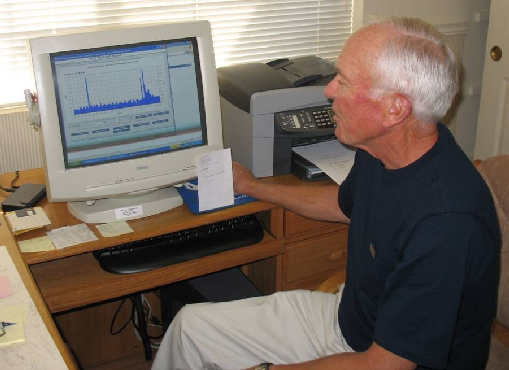Get Smart: Researchers call results of GridWise energy demand-response project encouraging

If this blog takes the form of a news story, that's because it kinda is. In some ways this is a phenomenon I’ve been writing about for years -- the fact that headless devices like sensors and meters and intelligent appliances will start driving more traffic on the Internet than the things we normally think of as computers. This is where the green tech world and the gadget world collide.
The devices in question are smart meters, which are being held up by some people as the holy grail for reducing the load on today’s electrical grid and helping prevent system-wide power outages ala the fun one we had in New York a few years back. Not to be too cynical, but the fact that the Energy Independence and Security Act of 2007 includes a commitment to what it calls “SmartGrid” technologies doesn’t exactly hurt the cause.
Anyway, today the Department of Energy decided to disclose the results of two experiments in the Pacific Northwest that applied intelligent metering technology to management of the power grid. The findings underscore the reality that consumers already have the means to better control energy consumption today—IF they’re willing to pay for it and IF utilities are willing to step up. Two big "IFs," I'm sure you'll agree.
The main project, which ran between March 2006 and March 2007, was called the Pacific Northwest GridWise Demonstration Project, which included the Olympic Peninsula Project and the Grid Friendly Appliance Project. Funding was mainly provided by the DoE; corporate collaborators included Whirlpool (which provided some smart appliances like dryers) and IBM (which contributed software and analytical capabilities). The experiments were managed by the DoE’s Pacific Northwest National Laboratory (PNNL).
The Olympic Peninsula project included 112 homeowners, who were given electric meters that connected their thermostats, water heaters and dryers to the grid via a gateway from Invensys Controls and software from IBM. The software allowed homeowners to adjust settings either manually or automatically not just from within their home but through a mobile device with Internet access.
Jerry Brous, a 67-year-old homeowner who participated in the project, says he misses the feeling that he could influence his energy consumption directly. “You learn how much you can tolerate,” he said during a conference call to discuss the project results.

CAPTION Jerry Brous of Sequim, Wash., participant in a study to determine whether giving people more information about their electricity use and costs will prompt them to save energy. He's checking his stats on his PC at home.
The technology was a hot topic of conversation among Brous and his neighbors. Most people who saw the technology, Brous says, wanted it for themselves. Those who didn’t were technology-averse in the first place, he said. “The fact is, though, we don’t want more towers with electrical cables if we can help it,” Brous notes.
Rob Pratt, program director for the PNNL, says the participants in the research reduced peak loads by 15 percent year-over-year, resulting in an average savings of about 10 percent in utility costs. He believes the grid-management technology also will help a big problem currently associated with investing in alternative energy supplied by wind or solar sources: the intermittent nature of this supply.
Now, the bad news: right now, the sort of equipment used in the Pacific Northwest experiments can run $1,000 per household. Pratt said similar technology can be had for around $500, which is the pricepoint at which this becomes more cost-effective.
Ron Ambrosio, Global Research Leader, IBM Energy & Utilities Industry, said the results show that there are no technical hurdles to the adoption smart metering technologies and real-time energy pricing control systems. Rather, regulatory issues will have the most significant impact on adoption. That’s why there are regional pockets of work being done on advanced electrical grid technologies in states such as California, Texas, New York and Illinois, he said.
Full descriptions and results of the tests can be downloaded by visiting www.gridwise.pnl.gov.